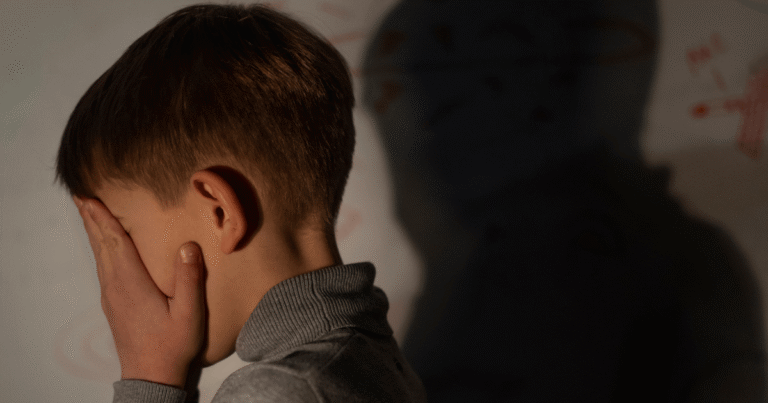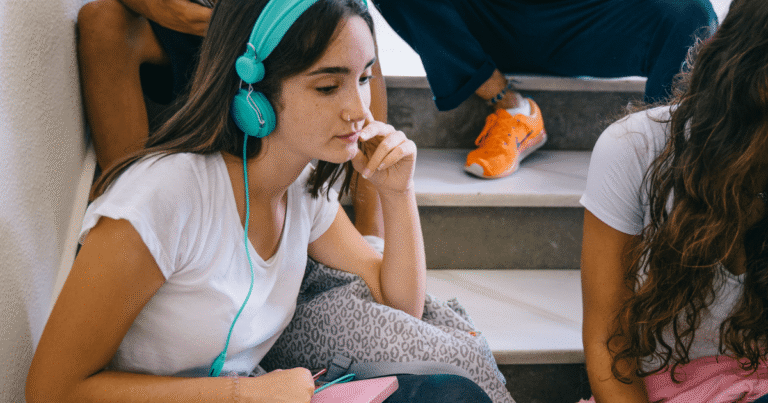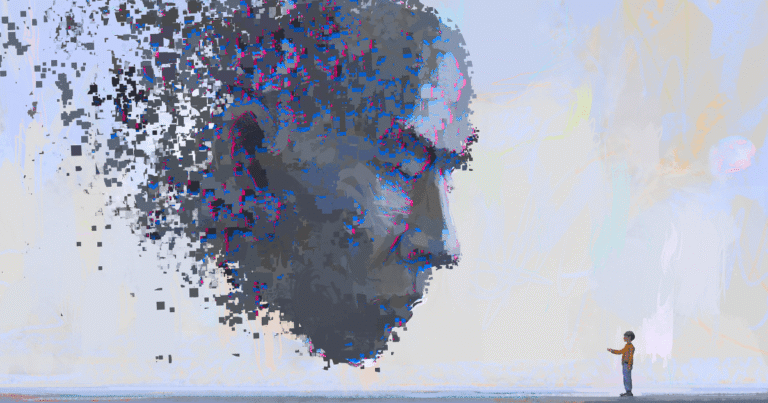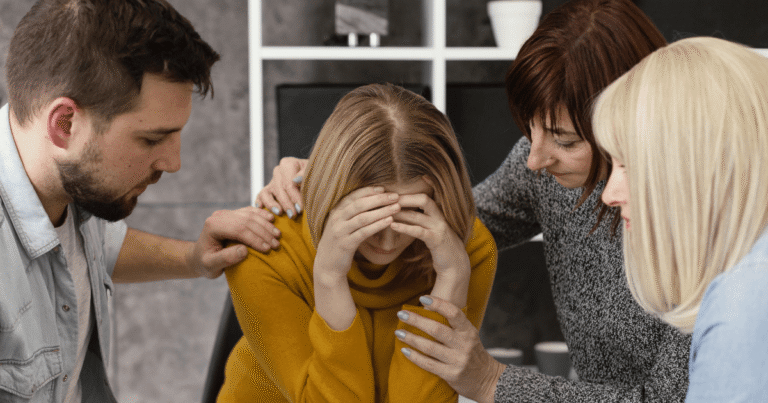The Ultimate 2025 Reading List: 15 Best Books for Overcoming Social Anxiety That Actually Work
Tired of social anxiety controlling your life? The right book can become your personal therapist, mentor, and guide on the journey from fear to freedom. These carefully selected books for overcoming social anxiety offer proven strategies, hope, and practical tools that have helped millions of people reclaim their social confidence.
When social anxiety whispers lies about your worth and capabilities, these books for overcoming social anxiety provide the evidence-based truth and practical tools you need to fight back. From comprehensive CBT workbooks to inspiring personal stories, this curated collection represents the most effective written resources available for transforming your relationship with social situations.
Whether you’re just beginning to understand your social anxiety or you’re ready for advanced healing work, this guide helps you choose the perfect book to meet you exactly where you are in your journey.
Why Books Are Powerful Tools for Social Anxiety Recovery
The Unique Benefits of Reading for Mental Health
Books for overcoming social anxiety offer several advantages that complement professional therapy:
Privacy and control: Read at your own pace without the vulnerability of face-to-face interaction
Accessibility: Available 24/7 whenever motivation strikes or anxiety peaks
Cost-effectiveness: Significantly less expensive than ongoing therapy sessions
Repeatability: Return to helpful chapters and exercises as often as needed
Empowerment: Take active control of your healing journey
Validation: Discover that millions of others share your struggles and have found freedom
How to Choose the Right Book for Your Needs
Consider your current situation:
- Just starting to understand social anxiety: Begin with comprehensive guides that explain the condition
- Ready for practical tools: Choose CBT workbooks with exercises and worksheets
- Seeking inspiration and hope: Pick memoirs and personal transformation stories
- Working with a therapist: Select books that complement your treatment approach
- Dealing with severe symptoms: Look for books that address trauma and deeper healing
Match your learning style:
- Action-oriented learners: Prefer workbooks with hands-on exercises
- Story-driven readers: Connect with personal narratives and case studies
- Scientific minds: Gravitate toward research-based explanations
- Spiritual seekers: Resonate with mindfulness and acceptance-based approaches
The Essential CBT Workbooks: Your Step-by-Step Recovery Toolkit
1. “The Shyness and Social Anxiety Workbook” by Martin M. Antony, PhD, and Richard P. Swinson, MD
Why it’s the gold standard: The most recommended book by therapists worldwide for social anxiety self-help.
What makes it exceptional:
- Based on decades of clinical research and proven treatment protocols
- Comprehensive self-assessment tools to understand your specific anxiety patterns
- Step-by-step exposure exercises with detailed safety guidelines
- Worksheets for tracking progress and maintaining motivation
- Suitable for both independent study and therapist-guided treatment
Key features:
- Complete anxiety disorder assessment questionnaires
- Cognitive restructuring exercises to challenge catastrophic thoughts
- Graduated exposure hierarchies to systematically face your fears
- Social skills training components and practice scenarios
- Relapse prevention strategies for long-term success
Best for: Anyone serious about overcoming social anxiety using proven, structured methods
Expected timeline: 12-16 weeks for significant improvement with consistent practice
2. “Managing Social Anxiety: A Cognitive-Behavioral Therapy Approach” by Debra A. Hope, Richard G. Heimberg, and Cynthia L. Turk
Why it’s powerful: Developed by leading social anxiety researchers with decades of clinical experience.
What sets it apart:
- Based on the most extensively researched social anxiety treatment program in the world
- Real client case studies that demonstrate the recovery process
- Detailed forms and worksheets for comprehensive self-monitoring
- Chapter review questions that reinforce learning and retention
- Designed for both self-help and professional therapy integration
Unique elements:
- Breathing and relaxation techniques specifically adapted for social situations
- Detailed cognitive restructuring protocols with multiple examples
- Group therapy exercises modified for individual practice
- Comprehensive homework assignments that accelerate progress
Best for: People who want research-backed techniques with proven effectiveness
Approach: Highly structured, evidence-based methodology
3. “The Social Anxiety Workbook for Teens” by Goali Saedi Bocci, PhD
Why teens need this specialized approach: Addresses the unique developmental and social challenges of adolescence.
Teen-specific features:
- Relatable scenarios from school, social media, and peer interactions
- Tools for handling cyberbullying and online social pressure
- Techniques for managing academic performance anxiety
- Strategies for building authentic friendships and romantic relationships
- Guidance for communicating with parents and teachers about anxiety
Modern relevance:
- Addresses social media anxiety and online persona management
- Includes strategies for virtual learning and digital social interactions
- Covers dating app anxiety and modern romantic communication
Best for: Teenagers (13-18), parents of anxious teens, and anyone whose social anxiety began in adolescence
Mindset-Shifting Books: Transforming Your Relationship with Anxiety
4. “How to Be Yourself” by Ellen Hendriksen, PhD
Why it’s beloved: Combines deep compassion with practical, science-based strategies.
What makes it transformative:
- Written by a clinical psychologist who personally understands social anxiety
- Debunks harmful myths about social anxiety and shyness
- Reframes anxiety as a misguided protective mechanism rather than a character flaw
- Provides gentle, realistic strategies that respect your natural temperament
Key insights:
- Your social anxiety developed for understandable, protective reasons
- Small acts of social courage count as genuine bravery
- Authenticity is far more attractive than perfect social performance
- You can feel anxious AND still be socially successful
Unique approach:
- Balances self-acceptance with growth-oriented strategies
- Addresses the shame spiral that often accompanies social anxiety
- Provides hope without minimizing the real challenges of recovery
Best for: People who need both understanding and practical strategies, especially those who’ve been criticized for their social anxiety
5. “Dare: The New Way to End Anxiety and Stop Panic Attacks” by Barry McDonagh
Revolutionary approach: Instead of fighting anxiety, learn to respond to it completely differently.
The DARE method explained:
- D – Defuse: Stop fighting anxious thoughts and let them be present
- A – Allow: Accept anxiety sensations without resistance or struggle
- R – Run toward: Engage with life activities despite feeling anxious
- E – Engage: Focus attention on meaningful, values-based activities
Why it works:
- Reduces the exhausting struggle against anxiety that often makes it worse
- Teaches acceptance-based coping that builds long-term resilience
- Provides immediate techniques for panic attacks and acute anxiety
- Based on the author’s personal recovery from severe anxiety
Best for: People who have tried traditional methods without success, those who experience panic attacks alongside social anxiety
6. “The Solution to Social Anxiety” by Dr. Aziz Gazipura
Unique credibility: Written by a psychologist who overcame severe social anxiety himself.
Core message: Social anxiety is learned behavior that can be systematically unlearned through practice and self-compassion.
Key components:
- Building authentic confidence rather than fake-it-till-you-make-it approaches
- Challenging people-pleasing patterns that fuel social anxiety
- Developing healthy assertiveness without aggression
- Creating genuine connections through vulnerability and authenticity
Practical strategies:
- Specific exercises for building social confidence
- Tools for handling rejection and social disappointment
- Techniques for developing your authentic voice and opinions
- Strategies for setting healthy boundaries in relationships
Best for: People ready to make fundamental changes in how they show up socially, those struggling with people-pleasing and approval-seeking
Understanding and Self-Compassion Resources
7. “The Mindful Self-Compassion Workbook” by Kristin Neff, PhD, and Christopher Germer, PhD
Why self-compassion matters: Social anxiety often involves harsh self-criticism that perpetuates the cycle of fear and avoidance.
The three components of self-compassion:
- Self-kindness: Treating yourself with the same warmth you’d show a good friend
- Common humanity: Recognizing that struggle and imperfection are universal human experiences
- Mindfulness: Observing your experiences without getting caught up in self-judgment
Practical exercises:
- Self-compassion breaks for difficult social moments
- Loving-kindness meditations adapted for social anxiety
- Writing exercises for self-forgiveness and acceptance
- Body-based self-soothing techniques for social stress
Research backing:
- Extensive studies show self-compassion reduces anxiety and depression
- Self-compassionate people recover more quickly from social setbacks
- Self-compassion builds resilience without reducing motivation for growth
Best for: People who are highly self-critical, perfectionists, those whose social anxiety involves shame about their condition
8. “The Power of Now” by Eckhart Tolle
Core teaching: Most social anxiety exists in mental time travel—ruminating about past social failures or worrying about future social threats.
How present-moment awareness helps social anxiety:
- Reduces anticipatory anxiety about future social events
- Stops post-event rumination and social “post-mortems”
- Helps you stay grounded during actual social interactions
- Reduces the mental commentary that creates social self-consciousness
Key concepts:
- The difference between pain (unavoidable) and suffering (created by mental story-telling)
- How to observe thoughts without being controlled by them
- Finding peace in the space between thoughts
- Using consciousness as an anchor during emotional storms
Practical applications:
- Breathing techniques for social anxiety moments
- Grounding exercises for overwhelming social situations
- Mindful listening practices that reduce social self-focus
- Present-moment anchoring during conversations
Best for: People interested in spiritual approaches to healing, those who struggle with rumination and mental time travel
9. “Unwinding Anxiety” by Judson Brewer, MD, PhD
Unique approach: Treats anxiety as a habit loop that can be broken through understanding and mindfulness.
The anxiety habit loop:
- Trigger: Social situation or social threat
- Behavior: Worry, avoidance, or safety behaviors
- Reward: Temporary relief from anxiety (which reinforces the cycle)
How to break the cycle:
- Becoming curious about your anxiety patterns rather than judgmental
- Understanding the difference between helpful and unhelpful worry
- Using mindfulness to observe anxiety without being controlled by it
- Replacing anxiety habits with healthier coping mechanisms
Scientific foundation:
- Based on neuroscience research about habit formation and change
- Incorporates findings from addiction medicine and behavioral psychology
- Supported by clinical trials and brain imaging studies
Best for: People who want to understand the science behind their anxiety, those interested in habit-based approaches to change
Advanced Healing and Specialized Approaches
10. “Attached” by Amir Levine, MD, and Rachel Heller, MA
Focus: How attachment styles formed in childhood affect adult social relationships and anxiety.
The four attachment styles:
- Secure: Comfortable with intimacy and independence
- Anxious: Seeks closeness but fears abandonment
- Avoidant: Values independence over intimacy
- Disorganized: Inconsistent patterns of relating
How this helps social anxiety:
- Explains why some relationships feel safer than others
- Provides strategies for building more secure relationships
- Helps understand and communicate emotional needs
- Reduces anxiety in romantic and close friendships
Practical applications:
- Identifying your attachment style and its origins
- Learning to communicate needs in relationships
- Building secure relationships despite anxious attachment
- Understanding partner’s attachment needs
Best for: People whose social anxiety is strongest in close relationships, those with relationship anxiety or fear of abandonment
11. “Daring Greatly” by Brené Brown, PhD
Core insight: Much social anxiety stems from shame about being seen as imperfect or vulnerable.
Key concepts:
- Vulnerability as the birthplace of courage, creativity, and change
- The difference between guilt (I did something bad) and shame (I am bad)
- How to build shame resilience and emotional courage
- Creating authentic connections through shared vulnerability
Practical strategies:
- Recognizing and interrupting shame spirals
- Building vulnerability in graduated steps
- Developing empathy for yourself and others
- Creating shame-resilient families and relationships
Research foundation:
- Based on over a decade of research on vulnerability, courage, and shame
- Grounded in social work practice and therapeutic experience
- Supported by extensive qualitative and quantitative studies
Best for: People whose social anxiety involves deep shame, those afraid of being “found out” or seen as inadequate
12. “The Gifts of Imperfection” by Brené Brown, PhD
Complementary to “Daring Greatly”: Focuses specifically on letting go of perfectionism and embracing authentic self-worth.
The ten guideposts for wholehearted living:
- Cultivating authenticity and letting go of what others think
- Cultivating self-compassion and letting go of perfectionism
- Cultivating gratitude and joy instead of scarcity and fear
- Building resilience and letting go of numbing behaviors
Why perfectionism fuels social anxiety:
- Creates impossible standards for social performance
- Makes every social interaction feel like a test
- Prevents authentic connection and vulnerability
- Generates shame when perfection inevitably fails
Best for: Perfectionists, high achievers whose social anxiety stems from performance pressure, people who struggle with authentic self-expression
Personal Stories and Inspiration
13. “My Age of Anxiety” by Scott Stossel
What makes it powerful: Brutally honest account of living with severe anxiety by a highly successful journalist.
Why it reduces shame:
- Shows that accomplished people can have severe social anxiety
- Normalizes the experience of anxiety symptoms and treatments
- Balances humor with serious discussion of mental health challenges
- Demonstrates that anxiety doesn’t define your potential or worth
Key insights:
- How anxiety can coexist with professional success
- The ongoing nature of anxiety management vs. “cure”
- Different treatment approaches and their varied effectiveness
- The importance of finding what works for your unique situation
Best for: People who feel ashamed about their anxiety, those who worry that anxiety prevents success, anyone who wants to feel less alone in their struggle
14. “Quiet: The Power of Introverts in a World That Can’t Stop Talking” by Susan Cain
Important distinction: Separates introversion (personality trait) from social anxiety (clinical condition) while celebrating both.
Key messages:
- Introversion is a normal, valuable personality trait, not a disorder
- Society’s extroversion bias contributes to social anxiety in sensitive people
- Quiet people have unique strengths and contributions
- You don’t need to become extroverted to be successful or valued
Validation for anxious introverts:
- Explains why overstimulating social environments feel overwhelming
- Provides scientific backing for needing alone time to recharge
- Shows how to leverage introvert strengths in social and professional settings
- Offers strategies for thriving in an extrovert-biased world
Best for: Introverts with social anxiety, people who’ve been told they’re “too quiet,” those who feel pressured to be more outgoing
15. “Maybe You Should Talk to Someone” by Lori Gottlieb
Unique perspective: Written by a therapist who becomes a therapy client, showing both sides of the therapeutic relationship.
How it helps social anxiety:
- Normalizes seeking professional help for mental health
- Shows the vulnerability and courage required for therapy
- Demonstrates that mental health professionals also struggle with human challenges
- Illustrates the healing power of being truly seen and understood
Key themes:
- The universal nature of human struggle and connection
- How therapy creates safe spaces for authentic self-expression
- The importance of finding the right therapeutic fit
- The ongoing nature of personal growth and healing
Best for: People considering therapy, those who worry about being judged by mental health professionals, anyone who wants to understand the therapeutic process
How to Use These Books Effectively
Creating Your Personal Reading Plan
Step 1: Assess Your Current Needs
- Severity of symptoms: How much does social anxiety interfere with your daily life?
- Previous experience: Have you tried self-help approaches before?
- Learning preferences: Do you prefer structured exercises or inspirational reading?
- Time availability: How much time can you dedicate to reading and practice?
- Professional support: Are you currently working with a therapist?
Step 2: Choose Your Starting Point
For beginners: “How to Be Yourself” or “The Shyness and Social Anxiety Workbook”
For action-takers: Any of the comprehensive CBT workbooks
For inspiration-seekers: “Quiet,” “My Age of Anxiety,” or “Maybe You Should Talk to Someone”
For deep healers: “The Mindful Self-Compassion Workbook” or “Daring Greatly”
For relationship focus: “Attached” or “Daring Greatly”
Step 3: Create a Sustainable Reading Schedule
- Consistency over intensity: 15-20 minutes daily beats 2 hours once a week
- Active engagement: Take notes, complete exercises, and reflect on insights
- Progress tracking: Notice changes in thoughts, feelings, and behaviors
- Patience with the process: Real change takes time and consistent effort
Maximizing the Benefits
Active Reading Strategies
Highlight and annotate: Mark passages that resonate or provide new insights
Keep a reading journal: Write about how concepts apply to your specific situation
Complete all exercises: Don’t just read about techniques—actually practice them
Discuss insights: Share relevant ideas with trusted friends, family, or therapists
Integration Techniques
Daily review: Spend 5 minutes each morning reviewing key concepts
Situation application: Use book strategies in real-world social situations
Progress celebration: Notice and acknowledge improvements, no matter how small
Setback learning: Use difficult days as opportunities to practice new skills
Combining Books with Professional Treatment
Working with a Therapist
Discuss book recommendations: Ask your therapist which books might complement your treatment
Share insights: Bring interesting concepts or exercises to therapy sessions
Coordinate approaches: Ensure book strategies align with your therapeutic work
Track progress: Use books to supplement and enhance professional treatment
Group Therapy Enhancement
Shared reading: Read the same book as other group members for discussion
Exercise practice: Try book exercises in the safety of group settings
Peer support: Recommend helpful books to others in your support network
Beyond Reading: Building Your Recovery Toolkit
Combining Books with Other Resources
Essential supplements to reading:
- Professional therapy: Books work best when combined with professional support
- Support groups: Connect with others who understand your journey
- Meditation and mindfulness apps: Support the practices taught in books
- Online communities: Find additional support and encouragement
Moving from Reading to Action
The gap between knowledge and change:
- Reading about social anxiety recovery is just the first step
- Real change requires consistent practice of book strategies
- Expect discomfort as you challenge old patterns and try new behaviors
- Progress is rarely linear—expect setbacks and continue practicing
Creating accountability:
- Set specific goals based on book recommendations
- Track your practice of new techniques and strategies
- Share your commitment with trusted friends or family
- Consider working with a coach or therapist to maintain momentum
Your Reading Journey Starts Now
Taking the First Step
The hardest part of using books for overcoming social anxiety is often just beginning. Your social anxiety might whisper that you’re not ready, that books can’t really help, or that you should wait until you feel more motivated.
The truth is: The best time to start is when you’re struggling. That’s when you’re most open to new perspectives and most motivated to try different approaches.
Setting Realistic Expectations
Books can help you:
- Understand your social anxiety better and feel less alone
- Learn practical coping strategies and proven techniques
- Develop new perspectives on social situations and relationships
- Build motivation and hope for continued growth and healing
- Supplement and enhance professional treatment
Books cannot:
- Provide immediate relief from all anxiety symptoms
- Replace professional treatment for severe social anxiety
- Work without your active engagement and practice
- Guarantee specific outcomes or timelines for recovery
Building Your Personal Library
Start with one book that resonates with your current needs and situation. Whether you choose a comprehensive workbook or an inspiring memoir, whether you’re looking for scientific strategies or spiritual wisdom, the right book is waiting to guide you toward greater social confidence and authentic connection.
Remember:
- Every expert was once a beginner
- Every confident person once felt afraid
- Every book you read is an investment in your future self
- Your willingness to seek help through reading shows tremendous courage
The journey from social anxiety to social confidence begins with turning to page one.
These books for overcoming social anxiety represent more than just words on pages—they’re roadmaps to freedom, guides to understanding, and companions on your journey toward authentic social connection. The wisdom of experts, the courage of those who’ve walked this path before you, and the proven strategies that have helped millions are all waiting within these pages.
Your transformation story is about to begin. Which book will you choose first?







